5 Pests that Eat Their Greens
5 Pests that Eat Their Greens
In honor of an early St. Patrick’s Day celebration, we wanted to write a pest-centered blog that also highlights the color green for this holiday. There is plenty to discuss when it comes to this criteria, as pests originate outdoors where the most natural green items can be found. While many pests are carnivorous against their own kind, many more of them are herbivorous (or at least omnivorous) and live off the plants growing in the immediate vicinity of their habitat. Since a blog about every pest that eats greenery would be about 100 pages too long, let’s focus on five of the worst and most common garden pests, as well as the evidence that points to their presence.
Signs of the Times
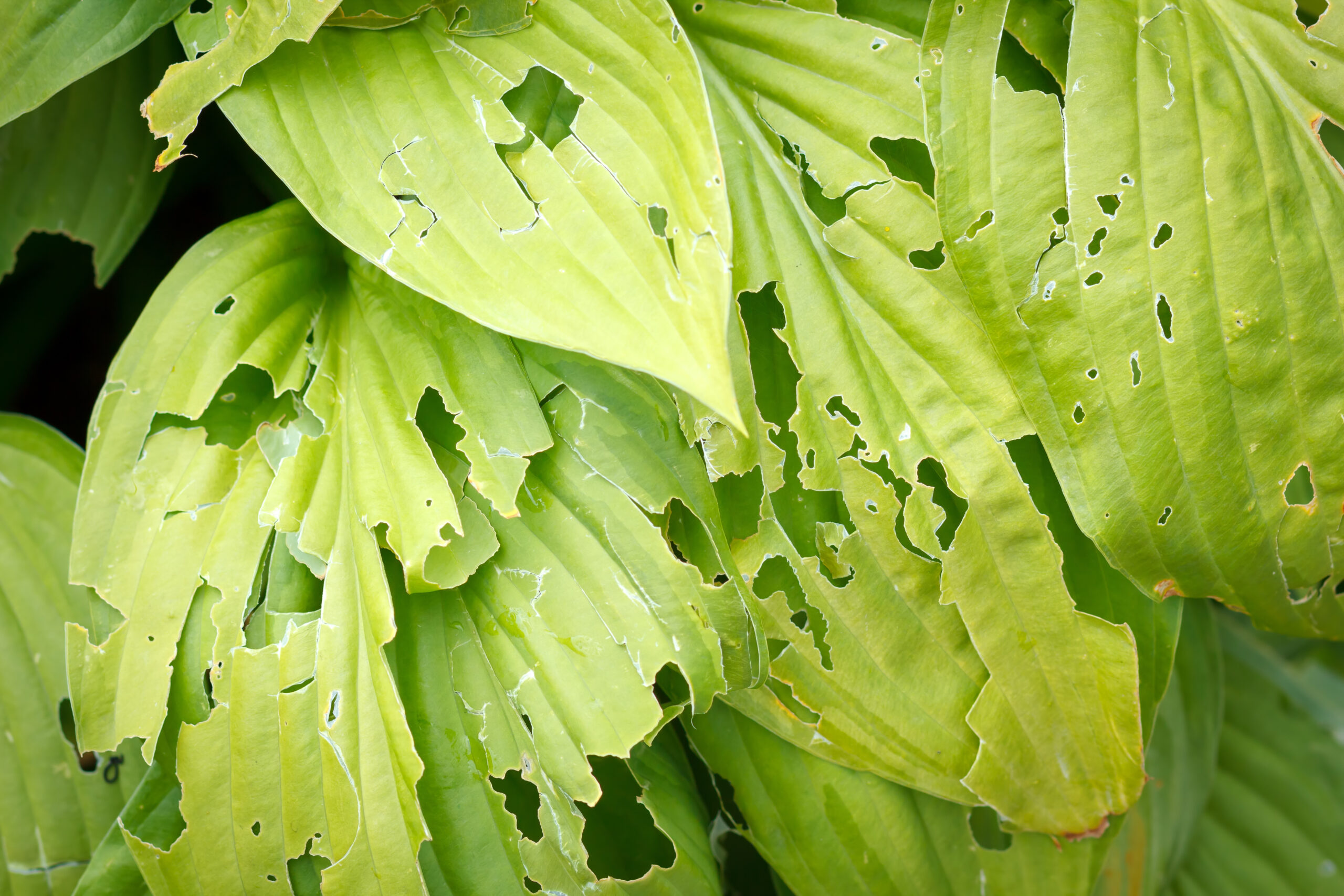
One of the reasons why garden pests are so dreaded is because they can hide from humans very easily. Some of them only come out to feed at night, and most garden pests live under the topsoil when they aren’t eating. Unless you are doing yard work every day and carefully examining each plant, it can feel nearly impossible to find the pests until it’s too late. However, the biggest giveaway that something is wrong is the effect these pests have on the vegetation. When you are out among the greenery, these are the most common and clear signs of a pest invasion amidst the plants:
- Spots of honeydew on leaves; can have sooty mold on the spots
- Less flower or crop production than usual
- Small holes in fruits and vegetables
- Plants falling or dying seemingly randomly
- Distorted plant structures
- Any strange leaf condition (that is not due to lack of water): wilting, drooping, yellowing, spotting, falling, having holes, etc.
If you see one or more of these signs – especially if they are on multiple plants – you likely have a pest infestation on your hands. Most common garden pests are not dangerous to the health of humans or pets, but they can devastate a garden if they are not treated. Now that we know the warning signs, let’s take a look at five usual suspects of this greenery damage.
Aphids
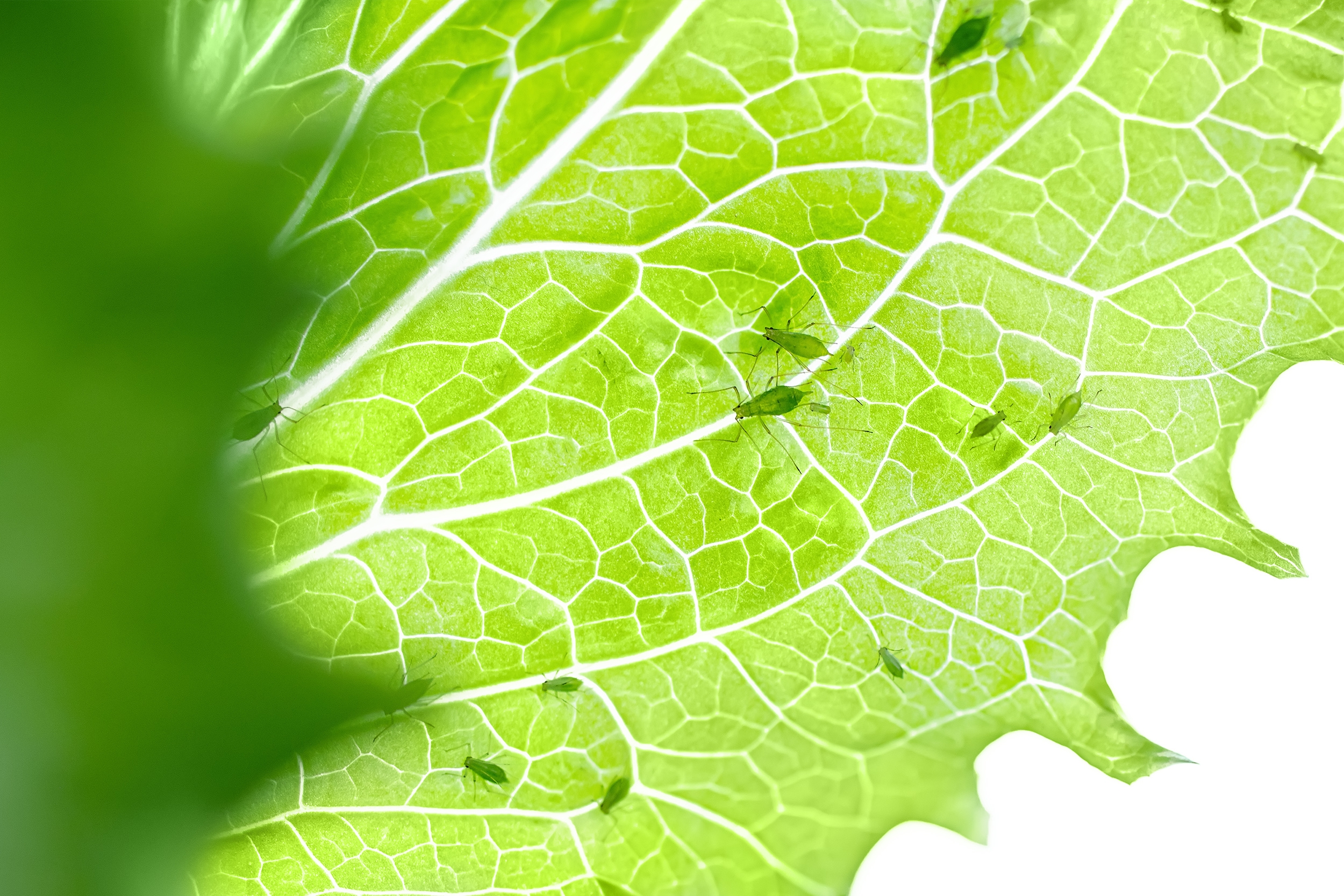
Popular Plants: fruits, vegetables, flowers, trees
As ants are to food, aphids are to plants. They seem like they are on every online garden pest list, and for good reason. These tiny insects may be the most common garden pests across the country, and have ruined plenty of plants over the years. Aphids come in a variety of colors, depending on the species, but the most common is green. They have piercing mouthparts that they use to stab into the tissues of the stem or leaves, then suck out the plant juices. Many species don’t have wings, so aphids tend to stay near their plants of origin. They live on the underside of leaves and either lay eggs or birth live young, most of which are female and already born pregnant. Aphids secrete honeydew after feeding, and this sticky substance can grow sooty mold that will gradually ruin the plant. The good news is that the aphid population is usually controlled by ladybugs, lacewings, and other insect predators. But the bad news is that aphids can cause irreversible damage to greenery if the pests aren’t eliminated before they feed on the plant for days on end. The typical effects of an aphid infestation include the affected plant withering, having stunted growth, or dying. Aphids may be small, but their appetites are mighty.
Caterpillars
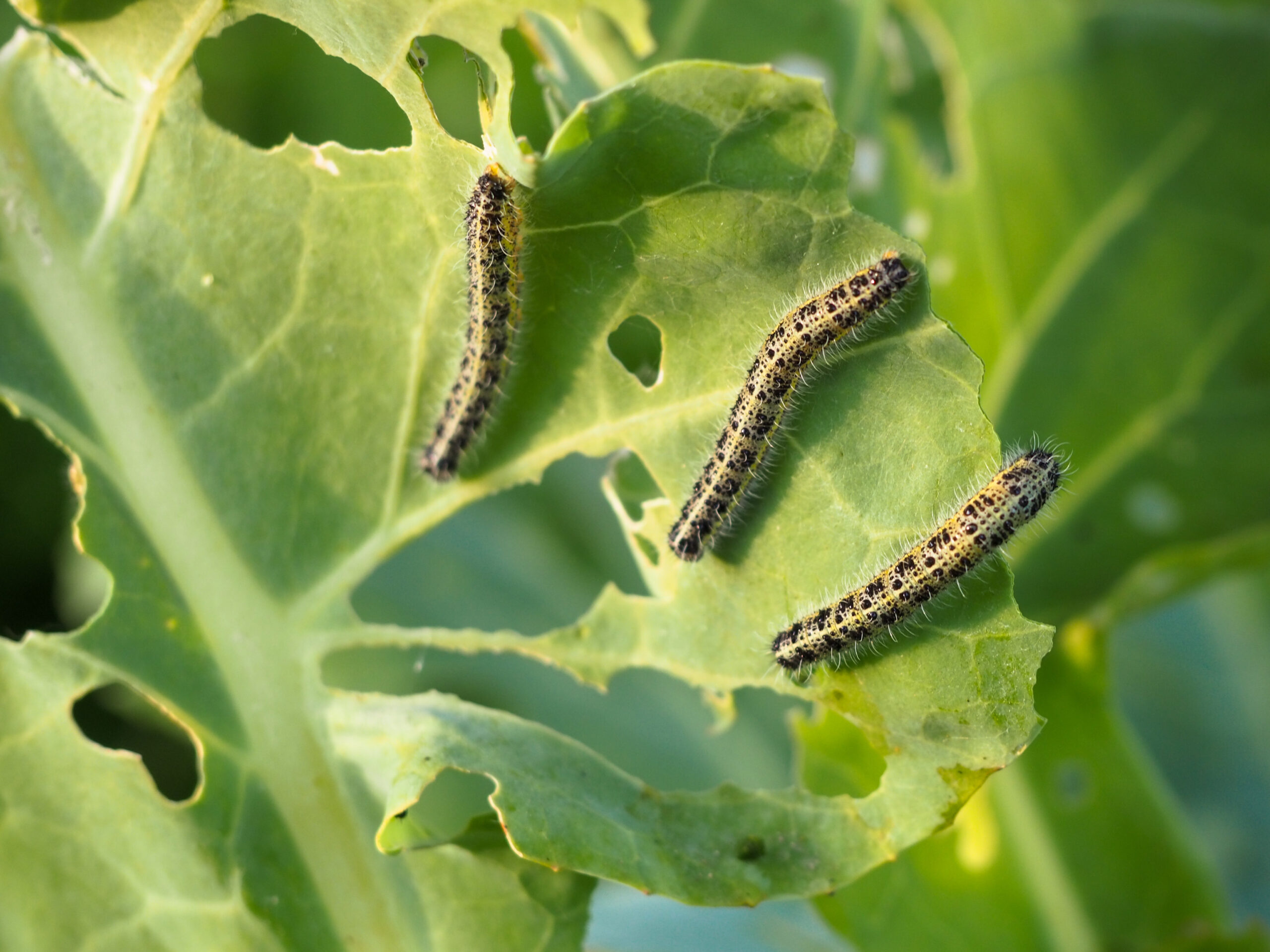
Popular Plants: fruits, vegetables, trees
Although this garden pest is just the younger stage of a different insect, caterpillars can deal some damage in a garden. These pests are the larvae of moths and butterflies, both of which can be found among the plants but aren’t nearly as harmful as their younger selves. The appearances of caterpillars differ between species, but they are generally soft and segmented with more than six legs. Though they are thicker than other garden pests, caterpillars can hide within the parts of the plant quite easily. Butterflies and moths lay their eggs on plants with the goal of giving the hatched caterpillars readily-available food. Caterpillars enjoy all parts of a plant, so their damage is not limited to one section. If they aren’t chewing leaves, they are enjoying the fruit or the stem. They can tunnel inside fruit to hide and eat at the same time, and even chew their way down into the base of the stem. In large quantities, caterpillars have been known to defoliate plants, reduce crop production, and completely kill plants. They can even ruin plants that are planted later in the season, as butterflies and moths just need warm temperatures to reproduce. If you see a hungry caterpillar crawling along a plant, it is easiest to just pick it off by hand and save your greenery from a certain fate.
Cutworms

Popular Plants: vegetable seedlings, flower seedlings
Speaking of garden pests that are the most harmful in their larval stage, cutworms get their name from the swift end they bring to young plants. These pests are the larvae of brown moths, and their adult form causes nowhere near the amount of damage to plants that their larval form does. Cutworms are about one inch long and more rounded than caterpillars, and have greenish-brown coloring that helps them to blend in with their surroundings. These pests hide in the topsoil during the day and emerge to feed at night, which is how they can ruin a new garden in days. Since they rest near the base of plants, cutworms often attack the stems that get see immediately. They will literally cut through parts of the plant with their sharp mouthparts, and eat the stems, leaves, and roots. Seedlings and small plants are the most susceptible to cutworm damage because their stems are thinner and less durable. These pests can stunt the growth of their plants at best and kill the greenery at worst. If you find a stem or seedling that looks to be toppled over, it is the work of cutworms. Brown moths lay their eggs in leaf litter, so controlling this pest in any life stage is vital to the survival of your garden.
Japanese Beetles
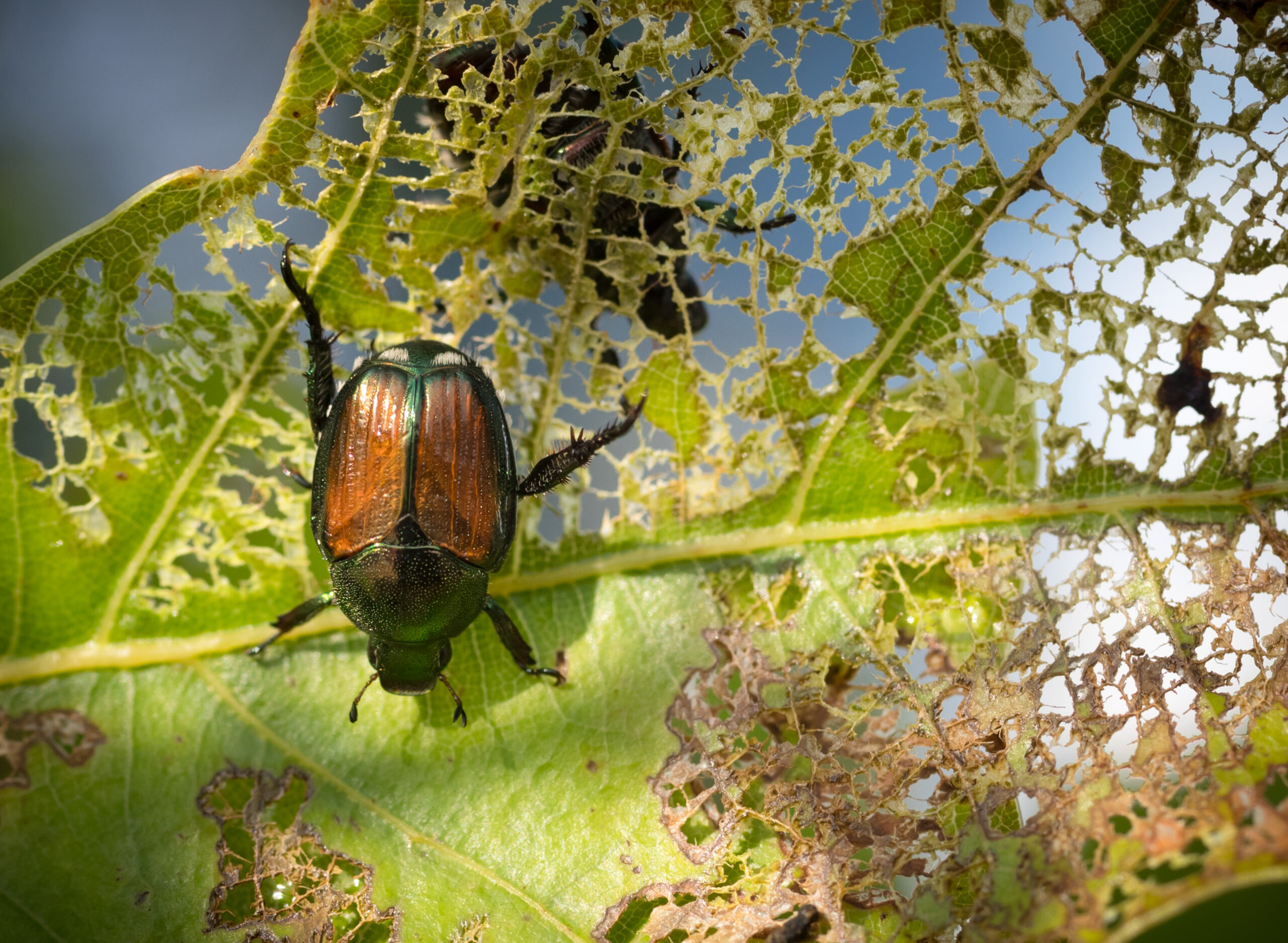
Popular Plants: vegetables, flowers, small fruits
Although these pests are the most visually appealing of the group, the destruction they cause in a garden is not at all enjoyable. Japanese beetles are typically metallic green with bronze wing covers, and grow to be about half an inch long. They lay their eggs underground, usually under grass of some kind, and these eggs hatch in the summer. The hatched grubs are white and will devour the roots of the grass or plants they are underneath, potentially ruining the greenery before they even reach their adult stage. Once Japanese beetles are fully grown, they shift their focus to all of the plants above-ground. These pests are known to eat from hundreds of plant species, and defoliate any greenery that they feed from for an extended amount of time. Some of the more species-specific signs that Japanese beetles have infested the garden are if the flowers have been mostly eaten or if the leaves have multiple holes in them. In fact, these beetles will eat so much that they can skeletonize the leaves, which means the only remnants are the veins of each leaf. Japanese beetles may be a primarily east coast problem, but the destruction they can inflict on a yard has given them a reputation as one of the most dreaded garden pests ever.
Spider Mites
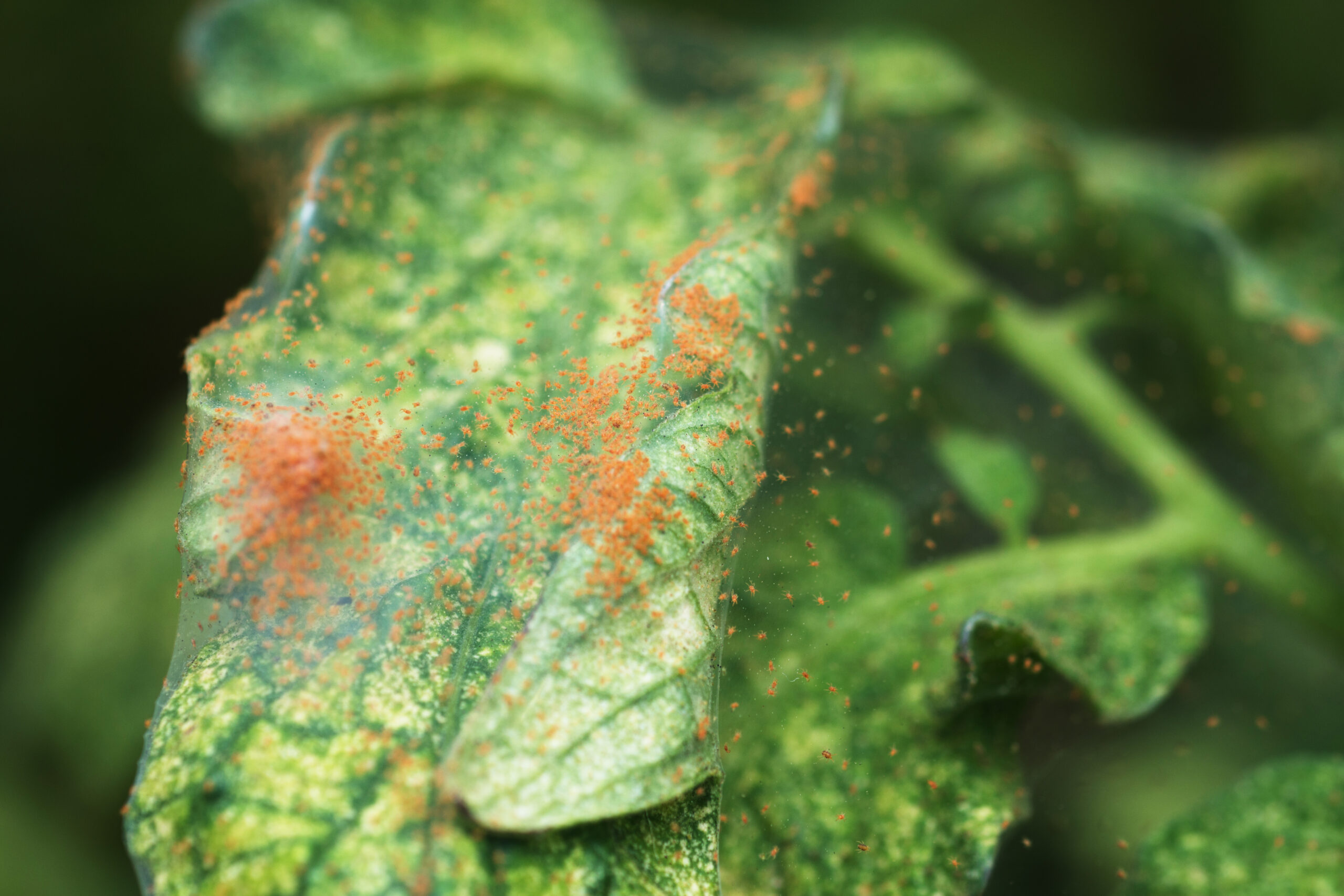
Popular Plants: fruits, vegetables, houseplants
These pests are the definition of “small but mighty.” Spider mites are arachnids, as their name suggests, and they live in large groups. They change colors depending on the general weather, but we know them best by their strawberry-red coloring that they take on during summer. Spider mites are about the size of a pinhead, so the most obvious clue to their presence is the silk webbing they create on the plants they invade. They can use these webs to ride the wind to another plant, but the primary function of the webs is to protect the pests from predators and the weather. These mites are at their worst in large groups, as their excessive feeding will immediately start to show in the leaves. Spider mites drink the chlorophyll from leaves, leaving behind white spots due to the lack of pigment. If enough chlorophyll is drained, the plant’s leaves cannot absorb enough sunlight and convert it into energy, thus draining the plant of its energy. Spider mite invasions are evident by the sudden yellowing and drooping of leaves, especially when paired with their wispy webs. These pests may be controlled by hungry spiders and predatory insects, but spider mites can certainly take the green right out of some greenery.
Protect Your Greens With Green!
Whether you have a few favorite plants or a garden that could be on a magazine cover, Green Pest Services is here to protect your home and yard year-round. We know how frustrating it is to long for a beautiful spring filled with lots of plants blooming and fresh air filling the home, only for pests to ruin the fun. Besides the annoyance of tiny pests eating away at your landscaping, they can pose quite a few dangers if they get inside the home. Ants and roaches contaminate any food they touch, and wood-boring insects can cause thousands of dollars in damages to a house’s framework. This is why Green begins each service with a complete inspection, as our experienced technicians look for signs of any pest activity all throughout the property. If you want effective pest control that only uses eco-friendly treatments, contact us to schedule your first service with our team today!
Citations
Gowans, M. (2018, December 17). What is eating holes in my green bean plants?. SF Gate. Available at https://homeguides.sfgate.com/eating-holes-green-bean-plants-91636.html (Accessed on February 17, 2023).
Januaries, F.S. (2022, December 21). 13 common pests of leafy vegetables: Photos, prevention, and control. Dengarden. Available at https://dengarden.com/gardening/pests-leafy-vegetables-prevention-control-treatment-management-photos (Accessed on February 17, 2023).
Miller, L. (2023, February 10). How to get rid of the 10 worst garden pests. Family Handyman. Available at https://www.familyhandyman.com/list/10-worst-garden-insect-pests-and-how-to-get-rid-of-them/ (Accessed on February 17).
Sorensen, K., Baker, J., Carter, C.C., & Stephan, D. (2023, February 10). Pests of beans and peas. NC State Extension. Available at https://content.ces.ncsu.edu/insect-and-related-pests-of-vegetables/pests-of-beans-and-peas (Accessed on February 17, 2023).
The 10 most destructive garden insects and how to get rid of them. (2018, July 10). Good Housekeeping. Available at https://www.goodhousekeeping.com/home/gardening/a20705991/garden-insect-pests/ (Accessed on February 17, 2023).
Keep Pests Out of Your Holiday Gatherings
Keep Pests Out of Your Holiday Gatherings Keep Pests Out of Your Holiday Gatherings Summary: The holiday season is all about good food [...]
Cold Weather vs. Warm Weather Infestations: How Temperature Shapes Pest Activity
Cold Weather vs. Warm Weather Infestations: How Temperature Shapes Pest Activity Cold Weather vs. Warm Weather Infestations: How Temperature Shapes Pest Activity Summary: [...]
Garden Pests Do Not Hibernate Indoors – How They Attack Houseplants And What To Do
Garden Pests Do Not Hibernate Indoors – How They Attack Houseplants And What To Do Garden Pests Do Not Hibernate Indoors – How They Attack [...]
The Scariest Pests (And Why They Freak Us Out)
The Scariest Pests (And Why They Freak Us Out) The Scariest Pests (And Why They Freak Us Out) Summary: A practical, homeowner-friendly guide [...]
Favorite Foods of Rats and Mice
Favorite Foods of Rats and Mice Favorite Foods of Rats and Mice Summary: Rats and mice are surprisingly picky about what they eat—especially [...]
Where Do Spiders Like to Hide? A Locals’ Guide to Sneaky Spider Spots (and What to Do About Them)
Where Do Spiders Like to Hide? A Locals’ Guide to Sneaky Spider Spots (and What to Do About Them) Where Do Spiders Like to Hide? [...]

